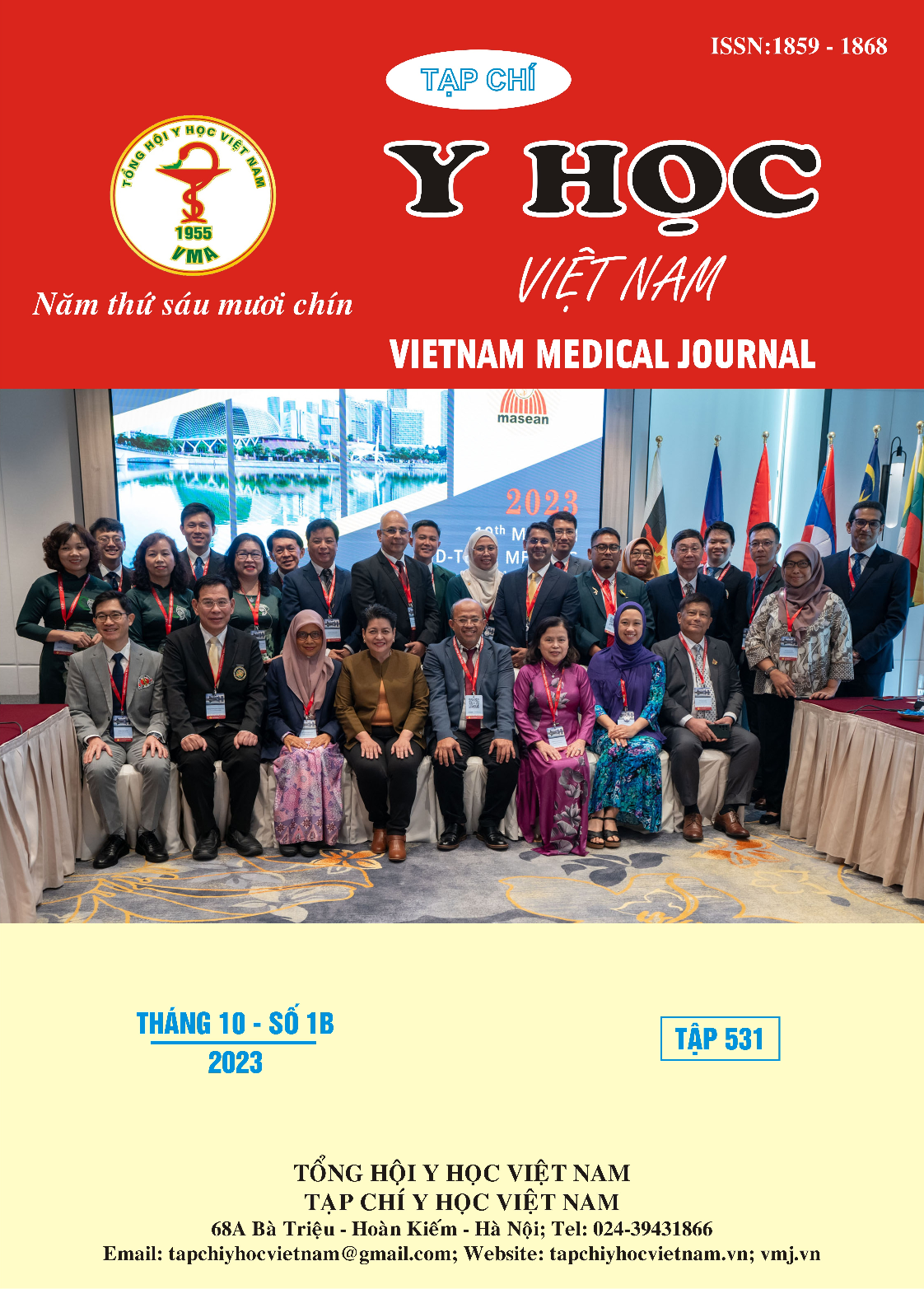EVALUATION OF THE RESULTS OF TOTAL KNEE JOINT REPLACEMENT TREATMENT OF KNEE OATHROSIS AT E HOSPITAL
Main Article Content
Abstract
caused by an imbalance between the synthesis and destruction of articular cartilage, which is characterized by wear and tear cracking and loss of articular cartilage. The disease is common in the elderly group. Total knee replacement is a treatment method that helps reduce pain for patients and regain mobility when other treatments have not worked. Objective: Evaluation of initial results of total knee replacement surgery for knee osteoarthritis at E Hospital. Subjects and methods: Descriptive, retrospective cross-sectional study in 46 patients undergoing total knee replacement surgery, including 1 patient who received knee replacement on both sides for knee osteoarthritis treatment at Hospital E from August 2018 until December 2022. Results: The mean age of patients was 66.8 ± 7.0 years old. The mean length of hospital stay was 8.6 ± 1.3 days. Pain relief after surgery: mainly painless joints accounted for 78.7%. There are 10 joints with mild pain, accounting for 21.3%. Knee function score: All knee joints before replacing KS, KFS are <60. Postoperative KS score: 92.0 ± 6.5, postoperative KFS: 91.6 ± 8.2. Conclusion: Total knee replacement surgery for knee osteoarthritis is a good solution used to treat patients with knee osteoarthritis.When other methods (medical treatment, axial chiropractic, arthroscopy, etc.) are not effective.
Article Details
References
2. Trần Ngọc Ân, Nguyễn Thị Ngọc Lan (2004), Thoái hóa khớp và cột sống, Bệnh học nội khoa T1, NXB Y học, tr.422-435.
3. Nguyễn Mai Hồng (2002), Thoái hóa khớp và cột sống, Tài liệu đào tạo chuyên nghành cơ xương khớp, tr.167-172.
4. Đặng Hồng Hoa (1997), Nhận xét một số đặc điểm lâm sàng, cậnlâm sàng của bệnh hư khớp gối, Luận văn thạc sỹ y học trường Đại Học Y Hà Nội.
5. Nguyễn Văn Châu (2012), Nghiên cứu mật độ khoáng xương, IL-1β, TNF-α ở bệnh nhân thoái hóa khớp gối, luận văn tiến sỹ y học.
6. FelsonDt, GaleDR, Gale M. (2005), Osteophytes & Progressionof knee Osteoathritis, Rhuematology, 44:pp100-104.
7. Kavonen RL, Negendank WG et al, (1994), factors affecting articular cartilage thichness in osteoarthritis and aging, J Rhummatol, 21 pp:1310-1317.
8. Nguyễn Văn Bình và Cộng sự (2002). “Cắt lọc tổ chức thoái hóa điều trị hư khớp gối bằng kỹ thuật nội soi”, Báo cáo khoa học Đại hội thấp khớp học lần III. Hội thấp khớp học Việt Nam: tr.253-257.
9. Phạm Chí Lăng (2004), Phẫu thuật nội soi trong điều trị bệnh lý thoái hóa khớp gối, Tạp chí y học thành phố Hồ Chí Minh chuyên đề cơ xương khớp, Đại học y dược thành phố Hồ Chí Minh 9(2) tr.142-147,
10. Phạm Chí Lăng (2005), Điều trị thoái hóa khớp gối bằng cắt xương sửa trục xương chầy, Kỷ yếu hội nghị thường liên lần thứ XII Hội chấn thương chỉnh hình thành phố Hồ Chí Minh, tr.104-109.


